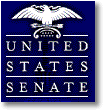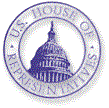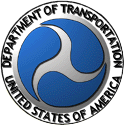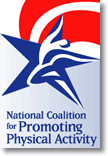|
|
 |
 |
 |
 |
 |
 |
|
|
 |
| |
August 5, 2002; Volume 8,
Issue 14 |
|
REAUTHORIZATION
NEWS

Transportation and Air
Quality Addressed in Senate EPW
Committee
 Michael Replogle of Environmental
Defense testified before the Senate Environment and
Public Works Committee hearing July 30th on
“Transportation and Air Quality.” Witnesses included
representatives of the Environmental Protection Agency,
the Federal Highway Administration, the California Air
Resources Board, and the Vermont Agency of Natural
Resources. Michael Replogle of Environmental
Defense testified before the Senate Environment and
Public Works Committee hearing July 30th on
“Transportation and Air Quality.” Witnesses included
representatives of the Environmental Protection Agency,
the Federal Highway Administration, the California Air
Resources Board, and the Vermont Agency of Natural
Resources.
The witnesses were supportive
of the CMAQ program on the whole and most suggested
increasing program funding. Scott Johnstone of the
Vermont Agency of Natural Resources recommended that the
CMAQ share of the surface transportation program be
increased and that attainment areas also qualify for
CMAQ funding. He also proposed that CMAQ be expanded to
include greenhouse gases, air toxics, and fine
particulates, as well as providing government incentives
for smart growth.
Michael Replogle, who also
spoke on behalf of STPP, pointed out that CMAQ funding
will have to double in order to meet the needs of
existing and new non-attainment areas. According to
FHWA’s Mary Peters, once the new eight-hour ozone and
fine particulate standards are implemented, many new
areas will exceed standards established under the Clean
Air Act.
Many of the witnesses spoke
to the progress achieved so far from emissions control
technology. However as Replogle pointed out, those
benefits are “significantly offset by the increase in
driving.” Agreeing that “technology cannot do it alone,”
EPA’s Jeffrey Holmstead said that Vehicle Miles Traveled
(VMT) increased 143% between 1970-1999. As Chairman
Jeffords said in his opening statement, “we know that a
pedestrian or a transit rider generates far less
pollution per passenger mile than a motorist in even the
cleanest of today’s cars.”
For more information on the
hearing, click here.
|
|

Senate
Appropriations Panel Sets Highway Funding at $31.8
Billion 
On July 25, a Senate
Appropriations Subcommittee voted to put $8.6 billion
more into transportation programs in FY03 than President
Bush had proposed in his budget. This move builds upon
other recent actions taken by Congress, which restored
highway spending to the “guaranteed” level provided in
TEA-21 as part of the supplemental appropriation bill.
The Senate Appropriations Subcommittee on Transportation
raises the FY’03 spending level further, from $27.6
billion made possible by the supplemental appropriations
bill to $31.8 billion.
The initial proposal of $23.2
billion for highway projects followed the formula
outlined in TEA-21 in 1998, and was a result of
decreased revenues from fuel taxes.
For more information, click here.
For background on the funding
adjustment, click
here.
|
|

Hearing on Special
Needs Transit: "A Lifeline for America's Citizens"

 The Senate Subcommittee on Housing
and Transportation held a hearing July 17 on public
transit services for elderly, disabled and low-income
riders, those groups most dependent on transit for their
transportation needs. Among the issues discussed were
the Job Access and Reverse Commute (JARC) program, a
TEA-21 program targeted to TANF recipients. The needs of
the elderly and persons with disabilities were also
reviewed, with specific attention given to efforts to
adhere to the Americans with Disabilities Act
(ADA). The Senate Subcommittee on Housing
and Transportation held a hearing July 17 on public
transit services for elderly, disabled and low-income
riders, those groups most dependent on transit for their
transportation needs. Among the issues discussed were
the Job Access and Reverse Commute (JARC) program, a
TEA-21 program targeted to TANF recipients. The needs of
the elderly and persons with disabilities were also
reviewed, with specific attention given to efforts to
adhere to the Americans with Disabilities Act
(ADA).
Two members of the
Transportation Equity Network testified about their own
experiences, one who moved from welfare to work with the
help of JARC’s subsidized transit and now works with the
JARC program to aid others in that transition. Another
witness spoke about her experience as a social worker in
Appalachia and of her own need for transit to access
medical services. All three witnesses concurred that
public transportation is essential for quality of life
and equal access to jobs, health care and community
involvement.
In addition, witnesses from
the American Association of Retired Persons (AARP) and
the American Association of People with Disabilities
(AAPD) stressed that greater investment in transit and
paratransit are necessary to fill the current gaps in
service. Although paratransit services remain essential
to mobility for the elderly and disabled, they also
emphasized the need to expand fixed-route systems and
make them ADA compliant. Planning for mixed-use
development, witnesses said, will also help improve
accessibility and efficiency of transportation
systems.
Transportation services
administered through programs such as Medicare,
Medicaid, Temporary Assistance for Needy Families
(TANF/welfare), HeadStart, and social services for
refugees and people with developmental disabilities are
currently estimated at between $2.5 and $3.5 billion
annually.
For more information on this
hearing, click here.
|
|

Grimshaw Testifies
Before House Subcommittee on Behalf of STPP 
 STPP’s Steering Committee Chair,
Jackie Grimshaw (of Chicago’s Center for Neighborhood
Technology) testified July 25th before the House
Subcommittee on Highways and Transit. The hearing,
“Transportation Solutions in a Community Context: The
Need for Better Transportation Systems for Everyone,”
featured representatives from a broad array of
organizations, including the Rails to Trails
Conservancy, the League of American Bicyclists, Scenic
America, the Transportation Research Board, and the
Active Living Campaign. STPP’s Steering Committee Chair,
Jackie Grimshaw (of Chicago’s Center for Neighborhood
Technology) testified July 25th before the House
Subcommittee on Highways and Transit. The hearing,
“Transportation Solutions in a Community Context: The
Need for Better Transportation Systems for Everyone,”
featured representatives from a broad array of
organizations, including the Rails to Trails
Conservancy, the League of American Bicyclists, Scenic
America, the Transportation Research Board, and the
Active Living Campaign.
Grimshaw’s testimony
highlighted the success of ISTEA and TEA-21 to create
opportunities for innovative transportation projects.
Fuller implementation of the law will be a key point in
the reauthorization of TEA-21, said Grimshaw. In
response to a question from Rep. Brown’s (SC-R)
regarding funding what he described as “non-traditional”
transportation projects while highway revenues are
expected to decrease, Grimshaw pointed to the efficiency
of these projects, saying that the solutions people are
seeking are often smaller projects. “Money isn’t the
main problem,” she said, “it’s connecting resources with
local decision-makers.”
Grimshaw also introduced the
Alliance for a New Transportation Charter (ANTC), a
national coalition of advocates for a transportation
policy that supports healthy communities. ANTC is
developing policy recommendations for TEA-21’s
reauthorization that will be available later this
year.
Other witnesses described a
broad array of suggestions in reauthorizing TEA-21.
Keith Laughlin of the Rails-to-Trails Conservancy spoke
of the disparity in Transportation Enhancements program
– which funds trail projects – between approved projects
and funded projects. He pointed out the strong demand
for the program, despite an obligation rate of only 69%.
No new categories of eligibility should be added,
Laughlin maintained, as the program is already stretched
thin. Elissa Margolin of the League of American
Bicyclists pointed out that funds are available for bike
projects in categories other than enhancements and she
called for more explicit language regarding this
eligibility.
Meg Maguire of Scenic America
spoke of the Scenic Byways program and the importance of
“contact sensitive highway design,” that better project
delivery should be achieved through administrative
changes, not by weakening environmental
protections.
For more information on this
hearing, see visit http://www.tea3.org/.
|
|

House Subcommittee
Discusses Sources of Revenue for Highway Trust Fund

 The House Subcommittee on Highways
and Transit held a hearing July 16th to explore new
revenue sources for the Highway Trust Fund (HTF). The
primary issue was the long-term viability of the
motor-fuel tax to finance the HTF, which currently
receives 88% of its revenues from fuel taxes. Lawmakers
are concerned that HTF revenues will decline as cars
become more fuel-efficient and eventually move away from
petroleum-based fuels altogether. This comes at a time
when the USDOT has estimated an average of $56.6 billion
over the next 20 years needed to maintain our nation’s
roads and bridges, and $10.8 billion per year to
maintain transit infrastructure. Because of the 2001
economic downturn, HTF revenues in that year were $4.5
billion less than projected. $1.1 billion of this
deficit was attributed to the use of gasohol, a blend of
gasoline and ethanol which reduces emissions. The tax
rate is lower for gasohol than gasoline and a portion of
the revenues goes directly to the General
Fund. The House Subcommittee on Highways
and Transit held a hearing July 16th to explore new
revenue sources for the Highway Trust Fund (HTF). The
primary issue was the long-term viability of the
motor-fuel tax to finance the HTF, which currently
receives 88% of its revenues from fuel taxes. Lawmakers
are concerned that HTF revenues will decline as cars
become more fuel-efficient and eventually move away from
petroleum-based fuels altogether. This comes at a time
when the USDOT has estimated an average of $56.6 billion
over the next 20 years needed to maintain our nation’s
roads and bridges, and $10.8 billion per year to
maintain transit infrastructure. Because of the 2001
economic downturn, HTF revenues in that year were $4.5
billion less than projected. $1.1 billion of this
deficit was attributed to the use of gasohol, a blend of
gasoline and ethanol which reduces emissions. The tax
rate is lower for gasohol than gasoline and a portion of
the revenues goes directly to the General
Fund.
Representatives from various
organizations were asked to testify on future funding
options for the HTF. The American Road &
Transportation Builders Association (ARTBA) recommended
a 2-cents-per-year fuel tax increase that would bring
revenues up to target level by 2009. An automated road
use fee was suggested, as was a reimbursement from the
General Fund to the HTF for revenues they would have
received without the gasohol tax incentive. AASHTO, the
American Association of State Highway and Transportation
Officials, proposed an innovative financing solution and
recommended that a commission of experts assess the
situation, and the Wisconsin Transportation Builders
Association suggested tying the tax to the Consumer
Price Index, since the fuel tax has been rising slower
than inflation.
For more information on the
hearing, click
here.
|
|

Transportation Secretary
Invites Comments on Future Surface Transportation
Programs 
 U.S. Transportation Secretary
Norman Y. Mineta has asked individuals and groups across
the country to take advantage of a new online service to
express their opinions and offer ideas as the U.S.
Department of Transportation (USDOT) prepares its
proposal to Congress on reauthorization of the nation's
surface transportation programs. U.S. Transportation Secretary
Norman Y. Mineta has asked individuals and groups across
the country to take advantage of a new online service to
express their opinions and offer ideas as the U.S.
Department of Transportation (USDOT) prepares its
proposal to Congress on reauthorization of the nation's
surface transportation programs.
"As we develop new proposals
for our surface transportation program, we want to hear
from our state and local partners, the private sector
and all those who are interested in meeting the
transportation challenges of tomorrow," Secretary Mineta
said. "The new Web site and the traditional vehicles we
have provided will enable stakeholders and citizens
everywhere to submit ideas and comments, which will be
valuable resources as we move forward with the
reauthorization process."
Participants are encouraged
to use the Web site to submit comments online. They can
do so by logging on to the DOT website.
|
|

LOCAL
REPORT

Temporary Assistance
to Needy Families 
In the midst of the TEA-21
renewal process, the Temporary Assistance to Needy
Families (TANF) bill passed the Senate Finance committee
and will go before the full Senate soon. It includes
several provisions for transportation assistance,
several of which make it easier for states to use TANF
block grant monies as match for federal Job Access
Reverse Commute (JARC) grants. JARC grants allow local
communities to figure out how to make the transportation
system work better to enable all people to gain access
to good jobs, education and training.
A good example is Ride
DuPage, in DuPage County, Illinois, which assists
clients of various human services agencies get to jobs,
health care, and shopping with a flexible and easy to
use system. Ride DuPage was developed in response to a
1996 study for the County that found forty specialized
transportation services operating independently in the
county, each with different eligibility criteria,
service areas, and fare policies. The new system funnels
all trip requests to a scheduling center, where rides
are coordinated and dispatched using GPS. A smart card
system allows clients to use any provider, including
buses, paratransit vans, taxis, and makes it easy for
the County to track billing and collect data on unmet
transportation needs.
The challenge is making these
limited federal resources serve more people more
effectively. While all states are required to
demonstrate that human services and transportation
agencies work together to coordinate transportation
aids, states such as Wisconsin and New Jersey have gone
one step further by formalizing the relationships and
dedicating funding for coordinated JARC applications. In
Illinois, lawmakers are considering the Transportation
Resources for Innovative Projects Law, HB 4941. It would
create a Coordinating Committee on Transportation
staffed by the Governor’s office, the Department of
Transportation and the Department of Human
Services.
"There used to be an ad-hoc
committee that met when staf had time and usually once
during the session, with little other planning or follow
through. The new state law would make coordinating these
services part of someone's job, which we hope will
result in more great collaborative projects like Ride
DuPage," said Julie Sampson, Director of Policy
Initiatives for the Work, Welfare, and Families
Coalition in Chicago, Illinois. She is working to secure
more funding for transportation assistance, child care,
and other supportive services for TANF recipients in the
new TANF bill.
For more information about
the Illinois legislation and THE Work, Welfare, and
Families COALITION, visit
www.workwelfareandfamilies.org.
For more information about
Ride DuPage, click here.
|
|

REPORTS & RESOURCES

APTA Study Links Public
Transportation Investment and Clean Air 
 On July 17, the American Public
Transportation Association (APTA) released a new
national study entitled “Conserving Energy and
Preserving the Environment: The Role of Public
Transportation”, which shows for the first time how
increasing investments in public transportation are the
most effective way to improve air quality and reduce
energy consumption without imposing new government
mandates, taxes or regulations. On July 17, the American Public
Transportation Association (APTA) released a new
national study entitled “Conserving Energy and
Preserving the Environment: The Role of Public
Transportation”, which shows for the first time how
increasing investments in public transportation are the
most effective way to improve air quality and reduce
energy consumption without imposing new government
mandates, taxes or regulations.
Authors Dr. Robert J.
Shapiro, Dr. Kevin A. Hassett, and Dr. Frank S. Arnold
calculated that public transportation currently saves
more than 855 million gallons of gasoline or 45 million
barrels of oil each year. If one in ten Americans were
to use public transportation regularly, our foreign oil
needs would be reduced by 40 percent, close to the
quantity of current yearly imports from Saudi
Arabia.
In addition, the report
proves that public transportation generates 95 percent
less carbon monoxide, 92 percent less volatile organic
compounds, and roughly half the amount of carbon dioxide
and nitrogen oxide than private vehicles, per passenger
mile. Moreover, if one in ten Americans used public
transportation, the U.S. would be able to reduce carbon
dioxide emissions by more than 25 percent of the
standard set by the Kyoto Agreement. Even small
increases in transit use would help many major US cities
that currently fail to meet EPA air-quality
standards.
As author Dr. Robert J.
Shapiro said, “We all know that a rail car or bus
carrying 40 people is far more efficient that a car
moving just one person. What people may not realize is
exactly how much energy is being saved, and how these
saving add up to millions of barrels of oil conserved
and millions of tons of harmful emissions avoided each
year.”
For more information, visit
http://www.apta.com/.

Issue Forum Linking Physical Activity
and the Built Environment 
 The National Coalition for Promoting Physical
Activity (NCPPA), in cooperation with the Livable
Communities Task Force and the Northeast-Midwest
Coalition, hosted an issue forum July 18th on physical
activity and the built environment. NCPPA’s Kathy
Spangler highlighted the relationship between decreasing
physical activity and an alarmingly rapid increase in
America’s obesity rate. Andy Clarke, Executive Director
of the Association of Pedestrian and Bicycle
Professionals, spoke of the physical barriers to walking
and biking, including unsafe and inconvenient physical
environments. Marya Morris of the American Planning
Association (APA) focused on the planning tools
available to overcome those obstacles. The National Coalition for Promoting Physical
Activity (NCPPA), in cooperation with the Livable
Communities Task Force and the Northeast-Midwest
Coalition, hosted an issue forum July 18th on physical
activity and the built environment. NCPPA’s Kathy
Spangler highlighted the relationship between decreasing
physical activity and an alarmingly rapid increase in
America’s obesity rate. Andy Clarke, Executive Director
of the Association of Pedestrian and Bicycle
Professionals, spoke of the physical barriers to walking
and biking, including unsafe and inconvenient physical
environments. Marya Morris of the American Planning
Association (APA) focused on the planning tools
available to overcome those obstacles.
For more information on the
presentations, see http://www.ncppa.org//
Information on the obesity
epidemic can be found here.
|
|

ANNOUNCEMENTS 
STPP is currently accepting
resumes for two positions; a Transportation Specialist
based in Pittsburgh, PA, and a California Policy
Director based in our state office in San Francisco. For
more information and complete job listings, visit http://www.transact.org/.
Smart Growth America (SGA) is
searching for a Policy Director. SGA is a nationwide
coalition of more than 80 organizations promoting a
better way to grow: one that protects farmland and open
space, revitalizes neighborhoods, keeps housing
affordable, and provides more transportation
choices.
The
Policy Director will be expected to coordinate with
SGA’s Steering Committee and partner organizations to
identify, develop and advocate smart growth policies
pertaining to transportation, environment, housing,
economic development, open space and farmland
protection. Click here for more
information.
The US Environmental
Protecting Agency has launched its 3rd annual Clean Air
Excellence Awards Program, designed to honor
outstanding, innovative efforts that help make progress
in achieving cleaner air. Entries must be submitted by
September 18, 2002. For more information, click
here.
| |
 |
 |
 |
 |
 |
 |
 |
 |
 |
 |
 |
| |
|